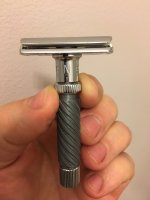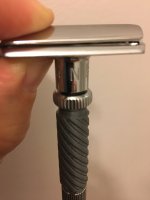Another question from the Gibbs newbie. If you affix a longer handle, do you have to do further modifications to the razor or are the threads long enough to reach?
Length wise, I am interested in putting maybe a Rex sized handle on it, but will keep it short if more mods are required.
Length wise, I am interested in putting maybe a Rex sized handle on it, but will keep it short if more mods are required.

